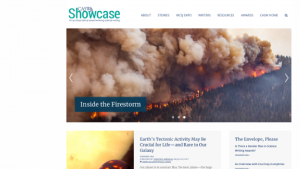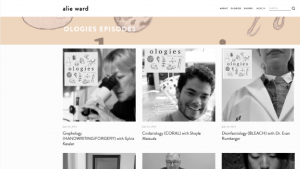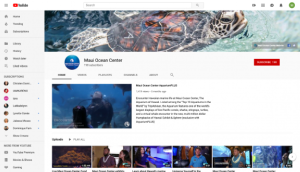Theme: Science Communication & Outreach
Back to Top
|
 |
|
STAR Net Libraries: STEM Activity Clearinghouse
|
Science |
|
Librarians, library staff, and educators seeking ideas for activities and programming may be interested in STAR Net Libraries' STEM Activity Clearinghouse. Here, readers will find more than 300 "high quality, vetted STEM activities that are appropriate for library use." These activities have been curated into 30 themed collections (as of this write-up) such as Space Science, Healthy Living, and Engineering Design Challenges. Visitors can also choose to browse all the activities and filter them by audience age group, content area, difficulty level, and time required, among other options. Many of these activities were developed by the STAR Net team specifically for use in libraries, and those resources created by other organizations include suggestions of ways to adapt them for library use, as well as links to the original source. Many activities also include how-to videos, and some provide teacher's guides with suggestions for connecting the activity with classroom material, applicable education standards, and links to additional resources. STAR Net Libraries is a project of the Space Science Institute's National Center for Interactive Learning and supported in part by funding from the Institute of Museum and Library Services. [JDC] |
|





|
|
 |
|
Resisting Scientific Misinformation
|
Science |
|
Social media has made it easy to share information with others, but unfortunately not all of that information is true. To help combat this challenge, middle and high school science educators should check out this free one-week curriculum designed to help students learn how to identify and resist misleading "scientific" claims. This classroom-tested curriculum was created by STEM educators Penny Noyce of Tumblehome Books and Andy Zucker, a retired senior research scientist at the Concord Consortium, along with support from the staff of PBS's NOVA at WGBH in Boston. It consists of four standards-aligned, 45-minute lessons (with an optional fifth lesson) that aim to teach students how to evaluate advertising claims and misleading arguments, how to ask the right questions about dubious claims, and how researchers and scientific organizations use the scientific process to develop well-supported claims and synthesize scientific information. Created with grades 6-12 in mind, these lessons include multiple student activities as well as homework. The curriculum includes four downloadable video files, a thorough teacher guide with links to additional resources, and a one-page informational flyer. [JDC] |
|





|
|
 |
|
 |
|
Ologies
|
Science |
|
Alie Ward is an Emmy Award-winning science correspondent and humorist who has appeared on CBS's Innovation Nation, Netflix's Brainchild, and the Science Channel's How to Build Everything, to name a few. She is also the creator and host of Ologies, a fantastic podcast in which Ward interviews an expert "-ologist" in a different field of study for each episode. Recent examples include bufology, or the study of toads, with Priya Nanjappa; ludology, or the study of games, with Dr. Jane McGonigal; and etymology, or the study of word origins, with Helen Zaltzman. Ward's inexhaustible curiosity, zest for "ask[ing] smart people stupid questions," and rambunctious sense of humor make Ologies a delight that everyone can learn from, regardless of their academic background. For those wanting to share this podcast with younger audiences, "bleeped" versions, as well as transcripts of many episodes, are available at the Ologies Extras link at the bottom of the site. Episodes are generally an hour or more in length, and listeners can stream them at the link above or subscribe via their podcast platform of choice. [JDC] |
|





|
|
 |
|
The Public Face of Science
|
Science |
|
The Public Face of Science is an ongoing three-year research project conducted by the American Academy of Arts and Sciences. Launched in 2016, this interdisciplinary project "is dedicated to exploring the complex and evolving relationship between scientists and the public" and aims "to examine how trust in science is shaped by individual experiences, beliefs, and engagement with science." Here, readers can access the reports, research papers, and other publications produced by this project, many of which are available at no cost. For example, the project's most recent research paper "The Public Face of Science Across the World" (published in July 2019), presents the findings of a study that analyzed the 2010-2014 World Values Survey to evaluate public attitudes towards science across 54 countries. Another paper entitled "Science During Crisis" (published in January 2019) makes recommendations regarding "the application of science during disasters," including best practices for scientific procedures and communication as well as relevant research and policy priorities. The Public Face of Science is led by its steering group chair, Richard A. Meserve, the President Emeritus of the Carnegie Institution for Science. [JDC] |
|





|
|



















